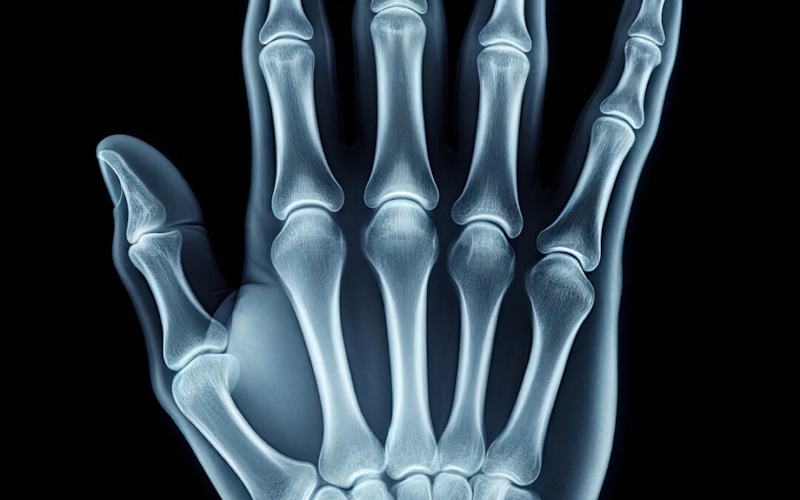Osteoarthritis vs. Arthritis: Unraveling the Differences Between Two Common Joint Diseases

Joint disease is a common concern in society, and two terms that are often intermingled are osteoarthritis and arthritis. Both affect the joints, but it is crucial to understand the differences between them for proper diagnosis and treatment.
Osteoarthritis: A degeneration of articular cartilage
Osteoarthritis is a degenerative joint disease characterized primarily by the progressive death of cartilage. Cartilage is the tissue that covers the ends of bones in a joint, providing a smooth surface and allowing frictionless movement. Over time and due to various factors, such as aging, overuse of the joints or old traumatic injuries, the cartilage wears away and progressively dies, leaving the bone underneath exposed. In this way, the movement of the joint is not performed through a smooth and lubricated surface (cartilage) but by putting in contact bone to bone producing inflammation, pain, stiffness and progressive deformity
In osteoarthritis, cartilage loses its elasticity and cushioning capacity, resulting in pain, swelling and stiffness in the affected joints. The most commonly affected areas include the knees, hips, hands and spine. Although osteoarthritis can be a natural part of aging, it can also be accelerated by genetic factors, obesity or previous injury and trauma.
Arthritis: An inflammation of the joint synovial membrane.
Arthritis, on the other hand, is a general term that refers to a group of dozens of diseases involving inflammation of the joints. Unlike osteoarthritis, which focuses on wear and tear of the cartilage, arthritis involves inflammation of the synovial membrane, a richly vascularized tissue that lines the joint. This inflammation eventually damages not only the cartilage but also the joint bone, destroying it and thus rendering the joint useless.
The vast majority of arthritis have in common that they are autoimmune in cause. This means that our defenses mistakenly attack our joints in the belief that they are not our own. The paradigm of autoimmune arthritis is rheumatoid arthritis but there are other autoimmune arthritis such as psoriatic arthritis, ankylosing spondyloarthritis, systemic lupus erythematosus and many others. There are arthritis that are not of autoimmune cause. The most frequent is gouty arthritis caused by irritation caused by uric acid microcrystals. Less frequently there are arthritis caused by bacteria, the most frequent being caused by staphylococcus aureus.
Clinical Differences: Symptoms and Diagnosis
The symptoms of arthritis and osteoarthritis may be indistinguishable. This is especially common in the knee and hands. Both are associated with pain, stiffness, swelling and ultimately deformity. Generally speaking, arthritis usually presents with much greater inflammation accompanied by effusion. Diagnosis between the two sometimes requires X-rays or MRI. While osteoarthritis does not require an additional diagnosis, arthritis always requires a surname. For this it is necessary to complement the study with a blood test including immunological markers.
Treatments and Management Approaches:
In osteoarthritis, treatment focuses on relieving symptoms and improving joint function. This may include lifestyle changes, physical therapy, pain medications and, in severe cases, surgery to repair or replace the damaged joint.
In contrast, the treatment of arthritis has evolved tremendously over the past 15 years. While it is not possible to cure arthritis, it is possible to “put arthritis to sleep”. This requires the use of medications to command and restore the balance of the immune response. The therapeutic success depends directly on the promptness of the diagnosis. It is therefore essential that the rheumatologist be consulted as soon as possible at the slightest suspicious symptom. As in osteoarthritis, physiotherapy and exercise (properly directed) are an essential part of maintaining joint function and mobility.
On the contrary, the treatment of arthritis has evolved enormously in the last 15 years. Although it is not possible to cure arthritis, it is possible to “put arthritis to sleep”. This requires the use of medications to command and restore the balance of the immune response. The therapeutic success depends directly on the promptness of the diagnosis. It is therefore essential that the rheumatologist be consulted as soon as pssible at the slightest suspicious symptom. As in osteoarthritis, physiotherapy and exercise (properly directed) are an essential part of maintaining joint function and mobility.
Accurate diagnosis is essential for effective treatment.
In summary, although osteoarthritis and arthritis share symptoms, they are distinct entities with specific causes and treatments.
Osteoarthritis is a disease primarily of the cartilage (the “tapestry” that protects the bones of the joint) while arthritis is a disease primarily of the synovial membrane (the “envelope” that lines the joints).
Understanding these differences is crucial for accurate diagnosis and effective treatment, thus providing those suffering from these conditions with a higher quality of life and management options tailored to their individual needs.

